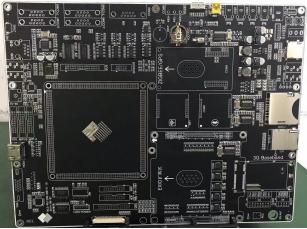A, Under normal PCB design conditions, the following factors are mainly affected by PCB manufacturing impedance:
1. The thickness of the dielectric layer is proportional to the impedance value.
2. The dielectric constant is inversely proportional to the impedance value.
3. The thickness of the copper foil is inversely proportional to the impedance value.
The line width is inversely proportional to the impedance value.
5. The ink thickness is inversely proportional to the resistance value. Therefore, the above points should be paid attention to when controlling the impedance
Second, the grounding wire design of the printed circuit board
Printed circuit board grounding wire design At present, electronic equipment used in various electronic equipment and systems still uses printed circuit boards as the main assembly method. Practice has proved that even if the circuit schematic design is correct and the printed circuit board design is improper, it will adversely affect the reliability of electronic equipment.

For example, if two fine parallel lines of the printed circuit board are very close, a delay of the signal waveform is formed, and reflected noise is formed at the terminal of the transmission line.
Therefore, in the design of the printed circuit board, care should be taken to use the correct method. In electronic equipment, PCB grounding is an important method to control interference. If the grounding and shielding are combined correctly, most interference problems can be solved. The ground structure of electronic equipment is roughly systematic, enclosure (shielded), digital (logic) and analog. The following points should be paid attention to in the ground wire design: 1. Correctly choose single-point grounding and multi-point grounding in the low-frequency circuit, the signal operating frequency is less than 1MHz, and the relationship between the wiring and the inductance is small, and the impact of the circulating current is small. The grounding circuit formed by the influence of interference is relatively large, so a small amount of grounding should be used. When the signal working frequency is greater than 10MHz, the ground impedance becomes very large. At this time, the ground impedance should be reduced as much as possible, and it should be used near multi-point grounding. When the working frequency is 1~10mhz, if a small amount of grounding is used, the length of the grounding wire should not exceed 1/20 of the wavelength, otherwise, multi-point grounding should be used.
2. The digital circuit and analog circuit separation circuit board has both high-speed logic circuits and linear circuits. They should be separated as much as possible, and the two ground wires should not be grounded separately from the power supply. Try to increase the grounding area of the linear circuit.
3. The grounding wire should be as thick as possible. If the grounding wire is very thin, the ground potential will change with current changes, resulting in unstable timing signal level of electronic equipment and poor anti-noise performance. Therefore, the ground wire should be as thick as possible to allow it to pass through the three allowable currents on the printed circuit board. If possible, the width of the ground wire should be greater than 3mm.
4. The grounding wire is formed by a closed-loop design. It is a digital circuit composed of only the printed circuit board of the ground system. The grounding wire made of the closed-loop can significantly improve the anti-noise ability. The reason is: there are many integrated circuit components on the printed circuit board, especially in the case of components with high power consumption, due to the thickness of the ground wire, a large potential difference will be generated on the ground, resulting in a decrease in the anti-noise ability of the circuit board Strong, if the grounding structure is turned into a loop, it will reduce the potential difference and improve the anti-noise ability of electronic equipment.